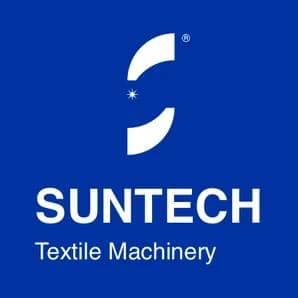In the current fiercely competitive textile industry, how to optimize warehouse management and improve warehousing efficiency while ensuring production efficiency has become a realistic challenge faced by many weaving mills, dyeing and finishing mills, and garment factories. In particular, the storage and scheduling of core materials such as cloth rolls and warp beams, which are large in size, heavy, and prone to wear, not only affect the continuity of production, but also affect the smoothness of the overall logistics operation.
Faced with the limitations of traditional manual warehouse management, more and more textile companies have begun to introduce automated storage and retrieval systems to build a more efficient, safe, and intelligent material management model.
Pain Points of Traditional Textile Warehousing
In many textile factories, warehouse management is still mainly manual, and there are many problems:
Chaotic stacking and large area: cloth rolls and warp beams are randomly stacked, which not only wastes space but also easily causes confusion and damage.
Low scheduling efficiency: Search and handling need to rely on manual labor, especially during the peak shipping period, and efficiency is severely limited.
Difficult data tracking: lack of real-time records of material in and out of the warehouse, which can easily cause errors and loss.
Prominent safety hazards: high-level stacking has the risk of slipping and collision, affecting personnel safety.
These problems directly affect the overall operating efficiency and management costs of the enterprise and restrict the production rhythm.
![beamstacker beamstacker]()
Composition of Automated Textile Storage System
A mature automated textile storage system usually consists of the following parts:
Smart Beam Stacker
A high-density storage structure designed specifically for storing warp beams or cloth rolls adopts a multi-layer stacking design to effectively utilize vertical space.
Automatic Handling Equipment
Including electric warp beam vehicles, electric cloth roll vehicles, AGV trolleys, track-type conveying systems, etc., which can complete the automatic handling and loading and unloading operations of materials.
Warehouse Management System
monitors the inventory status in real time, and realizes the digital and systematic management of processes such as warehousing, outbound, inventory, and transfer.
Identification and Tracking Technology
Combined with barcode, RFID, and other technologies, each roll of cloth and each warp axis is uniquely coded to achieve accurate positioning and traceability.
Advantages of Beam Stacker
1.Greatly Improved Storage Space Utilization
Traditional warehouses rely more on horizontal space, while automated three-dimensional shaft warehouses and cloth roll warehouses use vertical space stacking, which can increase the storage capacity per unit area several times. This advantage is particularly evident in first-tier industrial parks with tight land resources.
2.Improved in-and-out Storage Speed and More Efficient Response
The system can automatically call out specified cloth rolls or warp shafts according to orders or task instructions, and quickly respond to production or shipment needs. Compared with manual search and handling, it can save a lot of waiting time and labor input.
3.Realize "First In, First Out" and Reduce Waste
After the storage system is connected with the MES and ERP systems, the "first in, first out" principle can be implemented to avoid problems such as discoloration, mildew, or failure caused by a long-term backlog of fabrics.
4.Reduce Labor Costs and Error Rates
Automated equipment replaces traditional high-intensity manual handling, reduces the need for manpower allocation, and avoids errors, losses, and safety accidents caused by human negligence.
5.Full-Process Data Visualization
The WMS system records the storage time, usage frequency, inventory location, and other information of each batch of cloth rolls/warp beams in real time, providing managers with clear and traceable data support.
Conclusion
The management of cloth rolls and warp beams used to be one of the most labor-intensive and error-prone links in the textile industry. Today, with the continuous advancement of automated storage and retrieval systems, more and more companies are beginning to realize "smart warehousing".
Warehousing is not just a matter of space utilization, but also the cornerstone of efficiency, quality, and customer satisfaction. An orderly, efficient, and intelligent warehousing system can make your production rhythm more stable, customer delivery more accurate, and corporate operations more competitive.
Now is the best time to move towards intelligent textile warehousing. Let automation inject new momentum into your textile business!








